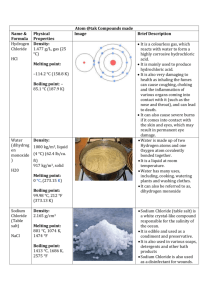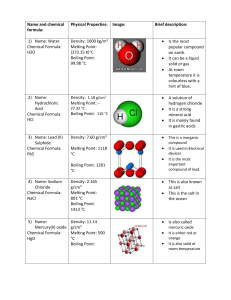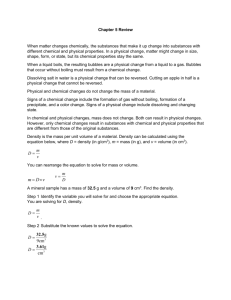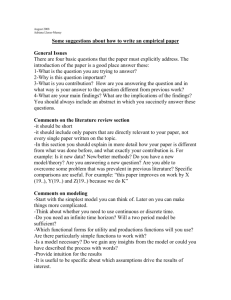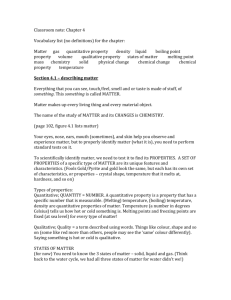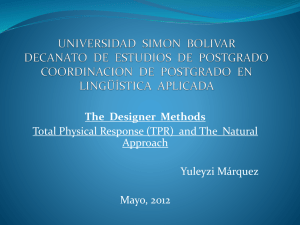Name and chemical formula: Physical Properties: Image: Brief
advertisement
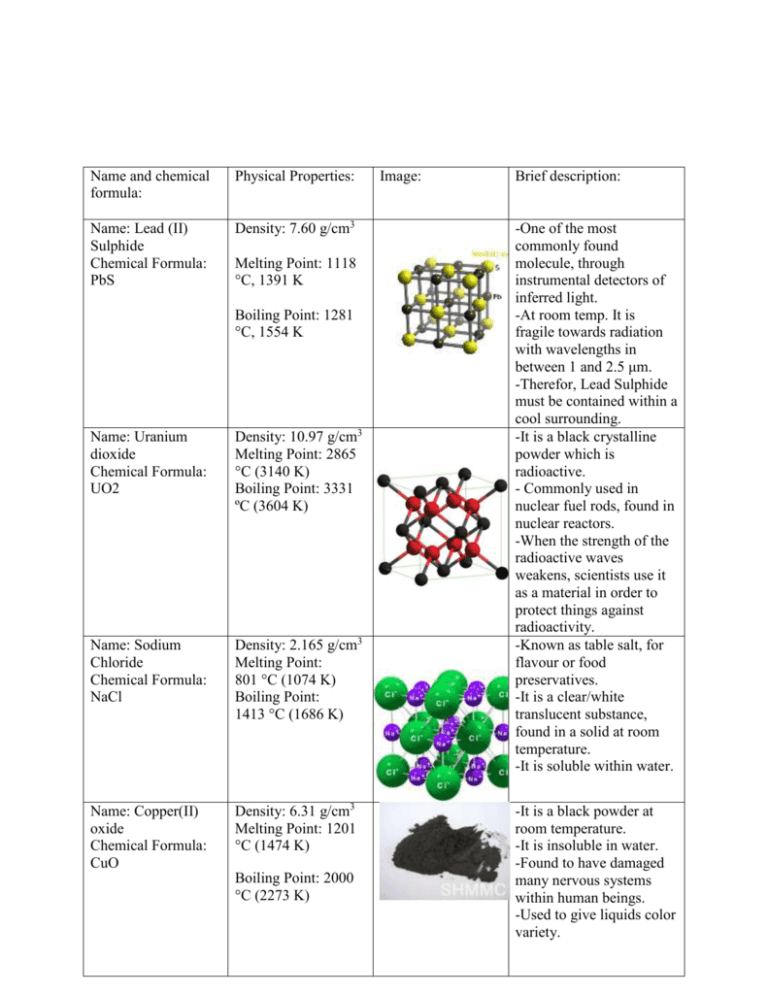
Name and chemical formula: Physical Properties: Name: Lead (II) Sulphide Chemical Formula: PbS Density: 7.60 g/cm3 Melting Point: 1118 °C, 1391 K Boiling Point: 1281 °C, 1554 K Name: Uranium dioxide Chemical Formula: UO2 Density: 10.97 g/cm3 Melting Point: 2865 °C (3140 K) Boiling Point: 3331 ºC (3604 K) Name: Sodium Chloride Chemical Formula: NaCl Density: 2.165 g/cm3 Melting Point: 801 °C (1074 K) Boiling Point: 1413 °C (1686 K) Name: Copper(II) oxide Chemical Formula: CuO Density: 6.31 g/cm3 Melting Point: 1201 °C (1474 K) Boiling Point: 2000 °C (2273 K) Image: Brief description: -One of the most commonly found molecule, through instrumental detectors of inferred light. -At room temp. It is fragile towards radiation with wavelengths in between 1 and 2.5 μm. -Therefor, Lead Sulphide must be contained within a cool surrounding. -It is a black crystalline powder which is radioactive. - Commonly used in nuclear fuel rods, found in nuclear reactors. -When the strength of the radioactive waves weakens, scientists use it as a material in order to protect things against radioactivity. -Known as table salt, for flavour or food preservatives. -It is a clear/white translucent substance, found in a solid at room temperature. -It is soluble within water. -It is a black powder at room temperature. -It is insoluble in water. -Found to have damaged many nervous systems within human beings. -Used to give liquids color variety. Name: Beryllium sulfate Chemical Formula: BeSO4 Density: 1.71 g/cm3 Melting Point: 110 °C (383 K) Boiling Point: N/A -It is a white crystalline solid at room temperature. -It is soluble in water. -It is toxic, and can be fatal. Name: Mercury(II) oxide Chemical Formula: HgO Density: 11.14 g/cm3 Melting Point: 500 °C (773 K) Boiling Point: N/A -It has a slightly reddish or very distinct orange color to it. -It is not soluble in water. -This molecule is toxic and very harmful to the body. Name: Nitrogen Chemical Formula:N2 Density: 101.325 kPa Melting Point: 63.153 K, 210.00 °C, Boiling Point: 77.36 K, -195.79 °C -It is found as a gas state, in room temperature. -A high majority of the air we breathe is nitrogen. - 75.3% by weight in dry air -Nitrogen will commonly be found in an element of itself. Name: Water Chemical Formula: H2O Density: 1000 kg/m3 Melting Point: °C (273.15 K)[2] Boiling Point: 99.98 °C (373.13 K)[2] Name: Hydrogen chloride Chemical Formula: HCl Density: 1.477 g/L Melting Point: – 114.2 °C (158.8 K) Boiling Point: –85.1 °C (187.9 K) -H2O is most often referred to as water. -H2O is an explosive reaction between the 2 hydrogen atoms and the 1 oxygen atom. - Clear / different shades of blue depending on how large the volume of the water is. -Hydrogen chloride is a diatomic molecule. -It is both corrosive and toxic, which both can harm and affect your body. -It can be detected within an inferred light wave scale. Name: Oxygen Chemical Formula: O2 Density: 101.325 kPa Melting Point: 54.36 K, -218.79 °C Boiling Point: 90.20 K, -182.95 °C Owen McCleery-MYP5-2010 http://en.wikipedia.org/wiki/Hydrogen_chloride http://en.wikipedia.org/wiki/Lead(II)_sulfide http://en.wikipedia.org/wiki/Oxygen http://en.wikipedia.org/wiki/Properties_of_water http://en.wikipedia.org/wiki/Mercury(II)_oxide http://en.wikipedia.org/wiki/Beryllium_sulfate http://www.jtbaker.com/msds/englishhtml/b2131.htm http://en.wikipedia.org/wiki/Sodium_chloride http://en.wikipedia.org/wiki/Copper(II)_oxide http://en.wikipedia.org/wiki/Uranium_dioxide -It is soluble within water. -Cubic shape when found in a crystal. -there are 6 valence electrons on each oxygen; they share two pairs of electrons to obtain the nearest noble gas status.
